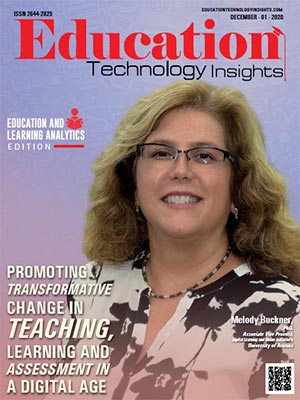THANK YOU FOR SUBSCRIBING
Be first to read the latest tech news, Industry Leader's Insights, and CIO interviews of medium and large enterprises exclusively from Education Technology Insights
Organisational Development in Higher Education
Caryn Stanley, Assistant Professor, University of Wisconsin-Platteville
 Caryn Stanley, Assistant Professor, University of Wisconsin-Platteville
Caryn Stanley, Assistant Professor, University of Wisconsin-PlattevilleThe pandemic, the economy, and shifts in demographics have had a profound impact on higher education, forcing institutions to make significant changes. Deloitte (2022) notes that as a result, institutions that are not traditionally known for their agility or innovation (many are still working on semesters, which were based on agricultural needs a few centuries ago), must now think more systemically and with an organizational development mindset. Most of these changes began prior to 2020 (e.g., changes in technology, shifting generational mindsets) - but since then, the timeline has accelerated dramatically.
At my institute, the areas that have needed the most attention are like those expressed by others. In addition to the newfound need for change management, other key areas for organizational development in higher education are as follows:
● Digital transformation: The trend toward remote learning and working is not going away. Institutions need digital infrastructure and resources to support remote access. Investment in teachers and other employees is also needed; creation of different pedagogical strategies and learning new tools takes time and experimentation. At a time when higher end enrollments are shrinking, finding additional funding for infrastructure and training can be difficult.
● Flexibility and agility: We know that institutions need to be more flexible and agile in their operations. This means quickly adapting to changing circumstances and responding to stakeholder needs appropriately. When a small change needs to go through several committees, flexibility is almost impossible. Curricular flexibility is also more important now than ever. A sustainable yet responsive curriculum allows leaders to flex as necessary to accommodate changing environmental conditions.
● Resilience: Resiliency matters: in our students, in ourselves, in our institutions-- the capacity to withstand shock and disruption is critical. When we are resilient, we also tend to recover quickly from setbacks. For some, resiliency can be exhausting. Thus, well-being considerations become imperative.
“The current environment has presented challenges for higher education, but it has also created opportunities to infuse organizational development strategies into our culture.”
● Well-being: Institutions need to promote the well-being of their employees and students. We are stressed, we have readjusted priorities, and we will make selfcare a priority. Organizational leaders and teachers that figure out a way to support that mindset will be leaps and bounds ahead of competition moving forward.
There are several strategies that institutions can use to promote organizational development. If you have been working for a while, these are going to sound simple. But in the chaos, we sometimes lose track of the basics—and a strong foundation must exist for anything else to change. A few things that seem “basic” but are in fact CRITICAL include:
● Developing a clear vision and strategy for the future: Our mission is not going to fundamentally change in most cases, but the ways in which we achieve that mission can and should change with the environment.
● Creating a culture of change, innovation, and continuous learning: As institutions that tend to be steeped in tradition and shackled in silos, the time has come to reward thinking differently, knowledge sharing, challenging assumptions, and taking risks. These expectations should be tied to the vision, mission, and strategies or the organization.
● Celebrating success: When times are uncertain and change is everywhere, celebrating the wins will build morale and create a springboard for additional motivation. These celebrations, no matter how small, will help reward folks and create a sense of unity and purpose.
● Building a strong leadership team: If the leaders are living in yesterday’s organization, the only option is really to stay stuck. Champions at the top are critical for the culture needed to attain agility and resiliency.
● Investing in professional development: This will help employees develop the skills and knowledge they need to succeed.
● Engaging with stakeholders: We’re in it together. Mutual success should be the goal.
The current environment has presented challenges for higher education, but it has also created opportunities to infuse organizational development strategies into our culture. By systemically considering the challenges and going back to basics to address them, institutions can create a more dynamic and agile organization that is better prepared to meet the challenges of both today and tomorrow.
Read Also
Goldilocks Regulation
Beyond the Quiz: Redefining Competence in eLearning
Beyond Theory and Into Monday Morning: Enhancing Graduate Programs for Teachers
Safeguarding Students in the Age of Deepfakes: An Educational Imperative
Delivering Excellence in Education through Transformative School Leadership
Curriculum Innovation for Student Success and Institutional Growth

I agree We use cookies on this website to enhance your user experience. By clicking any link on this page you are giving your consent for us to set cookies. More info

























